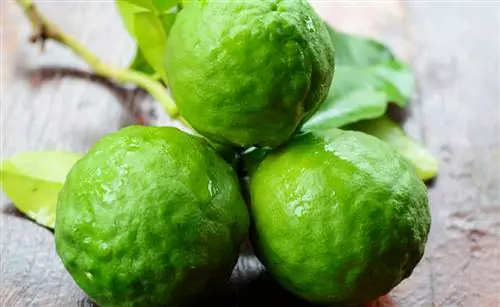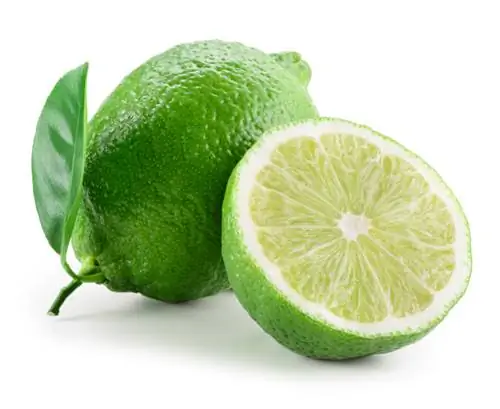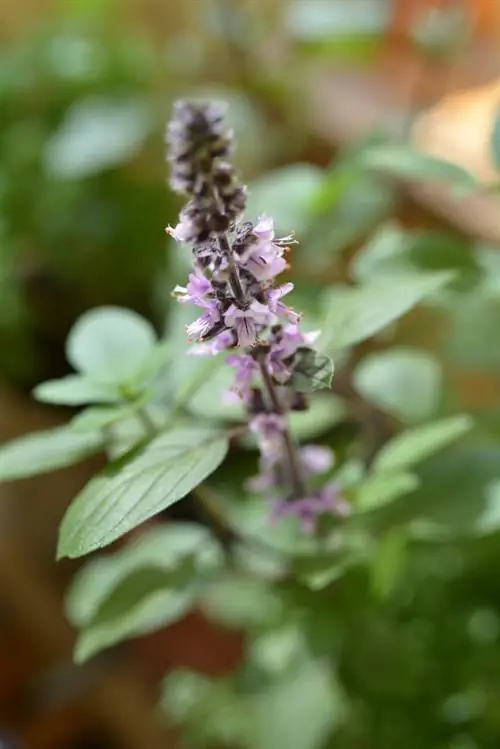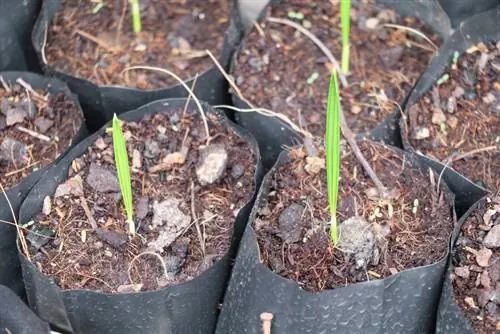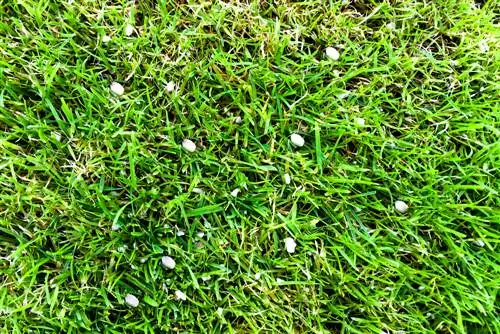- Author admin [email protected].
- Public 2023-12-16 16:46.
- Last modified 2025-01-23 11:20.
The lime tree can grow up to five meters high. It is an evergreen, richly branched and short-stemmed tree. The plant, also known as lime, is very similar to the lemon in terms of care.
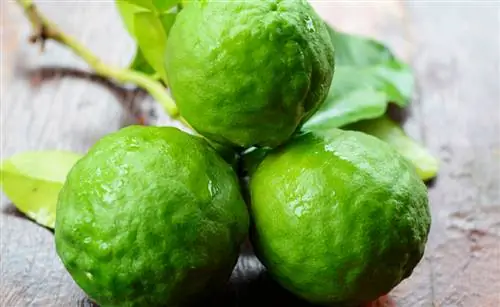
How do I optimally care for a lime tree?
To optimally care for a lime tree, you should water it regularly, but less than other citrus plants, provide it with citrus fertilizer weekly, repot it every one to three years and cut it back after overwintering. Pests and deficiency symptoms must be treated early.
When and how often should a lime tree be watered?
The lime requires significantly less water than other types of citrus such as the lemon or the orange. It's best to soak the root ball thoroughly when watering and then wait a few days until the top layer of soil has dried out. Use rainwater whenever possible.
How and with what should the lime be fertilized?
During the growing season, you should fertilize your lime tree once a week. A special citrus fertilizer (€6.00 on Amazon) is suitable for this because it contains all the necessary nutrients in the right composition. Fertilizer applications are not necessary in winter.
When should the lime tree be repotted?
Young trees should be transplanted into a larger pot once a year, older trees about every two to three years. The plants need a loose, permeable substrate; citrus soil is best.
When and how is the tree trimmed?
The best time to prune a tree is at the end of the wintering phase. You can cut back all light green new shoots completely, thinner ones by a third and thicker ones by two thirds.
What to do if the lime loses leaves?
Lime - just like other citrus trees - lose leaves especially if they are too dry or the pot is too small. So if your lime tree loses leaves, first check the moisture status and the size of the pot. A nutrient deficiency can also be the cause of leaf drop. The tree usually loses a lot of leaves towards the end of the winter period - lack of light is usually the reason for this.
Diseases and pests
Spider mites and plant lice such as scale insects, mealybugs and mealybugs are very common. In addition, limes quickly develop deficiency symptoms; iron is particularly problematic. As soon as the leaves have a light green or yellow color with dark green leaf veins, you should also provide the tree with an iron fertilizer.
How can the lime be propagated?
Lime can be propagated from both cuttings and seeds. You can do this in exactly the same way as with a lemon tree.
How is the lime tree overwintered?
Overwinter the lime in a bright but cool room with temperatures between five and a maximum of 12 °C. Water the plant regularly; you can do without fertilizer. Limes do not tolerate frost.
Tips & Tricks
Spider mites often appear after the winter break because the dry indoor air offers them ideal conditions. To prevent an infestation, it is best to spray the lime tree all around regularly with water.

